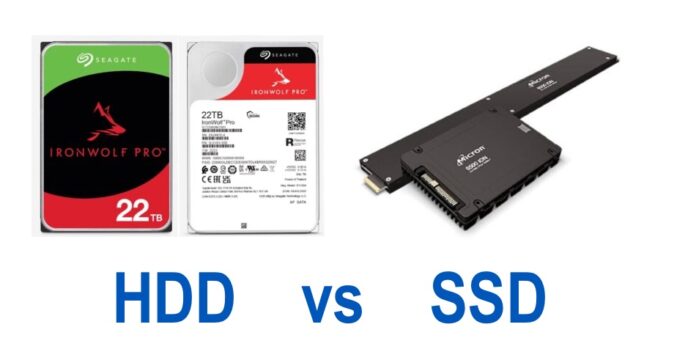Scality analysts have said that, in some use cases, disk drives can use less power than SSDs – specifically when compared with high-density SSDs when the storage is in active use.
Hard disk drives (HDDs) have physical platters that are kept spinning by electric motors and also read/write heads that are moved across platter surfaces by electricity as well. Solid state drives (SSDs), in which data writing and reading relies on electrical currents, have no mechanical moving parts and so, you would assume, need less electricity. The company says this is true when HDDs and SSDs are inactive but not when data is being accessed.

Scality CMO Paul Speciale says in a blog: “Surprisingly, our research here at Scality has found that high-density SSDs don’t have a power consumption or power-density advantage over HDD. In fact, we see the reverse today.”
The Scality research was kicked off by CEO Jerome Lecat’s rebuttal of the thinking that SSDs will kill off HDDs due to SSDs having a lower total cost of ownership. Speciale then said that Scality was looking more closely at the power, cooling and rack density aspects of the debate and that examination has resulted in the discovery that active HDDs use less power than active SSDs.
The analysis compared two drives:
- A Seagate Exos X22 7200rpm 22 TB HDD rated at 5.7 watts (idle), 9.4 watts (active read), 6.4 watts (active write)
- A Micron 6500 ION 30.72 TB TLC SSD rated at 5 watts (idle), 15 watts (read), 20 watts (write) per drive, and priced to be competitive with Solidigm P5316 QLC drive.
It modeled two workloads. There was a read-intensive one with 10 percent idle, 80 percent reading and 10 percent writing, and a write-intensive one with the same idle time, 80 percent writing and 10 percent reading. Speciale says: “For each workload profile, drives are assumed to be in the specified power state for the percentage of time indicated. The average per-drive power calculations for each workload profile are as follows:
Micron ION:
- Power consumption (read-intensive): (5*0.10 + 15*0.8 + 20*0.10) watts = 14.5 watts
- Power density (read-intensive): 30.72 TB / 14.5 watts = 2.1 TB / watt
- Power consumption (write-intensive): (5*0.10 + 15*0.10 + 20*0.80) watts = 18 watts
- Power density (write-intensive): 30.72 TB / 18 watts = 1.7 TB / watt
Seagate EXOS:
- Power consumption (read-intensive): (5.7*0.10 + 9.4*0.80 + 6.4*0.10) watts = 8.7 watts
- Power density (read-intensive): 22 TB / 8.7 watts = 2.5 TB / watt
- Power consumption (write-intensive): (5.7*0.10 + 9.4*0.10 + 6.4*0.80) watts = 6.6 watts
- Power density (write-intensive): 22 TB / 6.6 watts = 3.3 TB / watt
Note: All calculations rounded to the nearest tenth.

We charted the power consumption numbers to make the comparison clearer:

SSDs had a marginal advantage in the idle state, with HDDs needing 15 percent more power, but HDDs were 68 percent more efficient than SSDs when writing data, which resulted in a 63 percent efficiency advantage in the write-intensive workload. The HDD read advantage was less, 37 percent on a straight active read comparison and 40 percent in the read-intensive workload.
Speciale says: ”This clearly demonstrates that the perception of high-density QLC flash SSDs as having a power efficiency advantage over HDDs isn’t accurate today.”
His analysts also looked at a TB/watt power-density rating, and found that the 22TB disk drive had a 19 percent read-intensive and 94 percent write-intensive power-density advantage over the 30.72 TB SSD. Speciale reckons: “This will obviously vary with other workload pattern assumptions and is certainly subject to change as SSD densities increase in the coming years.”
Speciale also caveats the results by saying: “Moreover, there are additional considerations for enclosure-level (servers and disk shelves) density and power consumption metrics, and how the cost of power affects each customer’s overall storage TCO.”
His conclusion from all this is that: “We do not see a significant power consumption difference between the drive types (SSD vs HDD) for this to be a decision criteria.”
Rack power density counts
However, as SSDs are physically smaller than HDDs: “Based on these specs, we can see that SSDs provide a significant density advantage over HDDs. Some commercially available enclosures (storage servers and disk shelves) we see available today also can provide more than a 2X advantage in rack density for these SSDs.”
“It is important to note, however, that the amount of power that can be delivered to a datacenter rack (‘rack power density’) can be a limiting factor in many datacenters. In some cases, this rack power limitation does not support fully populating the racks with these high density servers. So ultimately power delivery can become the limiting factor in achieving ultra-high levels of rack density.”
But the amount of power that can be delivered to a datacenter rack (“rack power density”) can be a limiting factor in many datacenters. Ultimately, power delivery can become the limiting factor in achieving ultra-high levels of rack density.
Scality says it is itself agnostic in general about the HDD vs SSD choice for its object and file storage: “SSDs can deliver tangible performance benefits for read-intensive, latency-sensitive workloads.” But: “HDDs will remain a good choice for many other petabyte-scale unstructured data workload profiles for the next several years, especially where price (both $ per TB and price/performance) are a concern.”
Comment
This Scality finding casts a different light on the will-SSDs-kill-HDDs debate as it could surely change the five-year TCO calculation. Read Speciale’s blog here.








